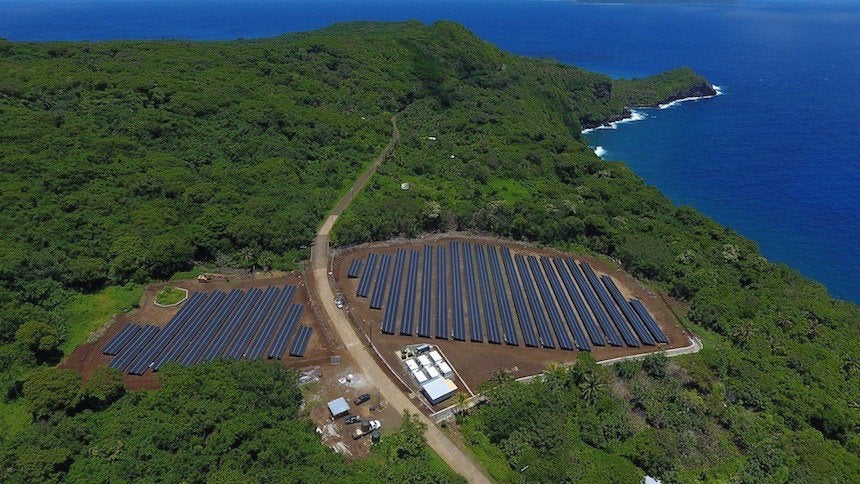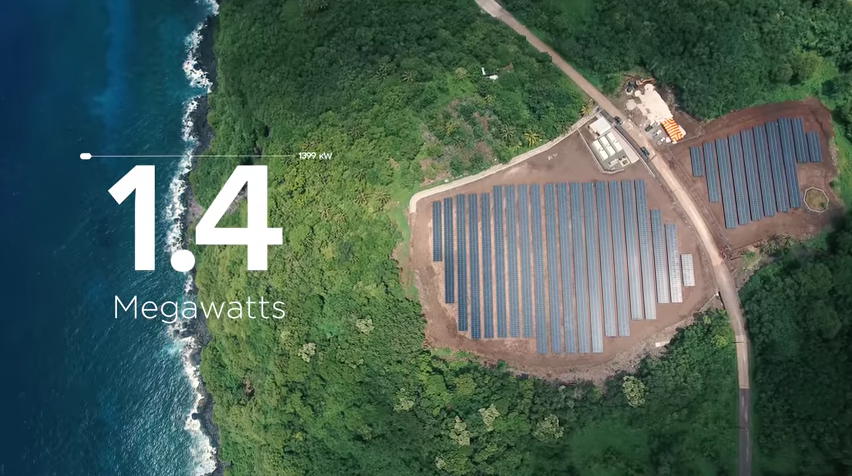The new Tesla is powering an entire island with solar energy

Your support helps us to tell the story
From reproductive rights to climate change to Big Tech, The Independent is on the ground when the story is developing. Whether it's investigating the financials of Elon Musk's pro-Trump PAC or producing our latest documentary, 'The A Word', which shines a light on the American women fighting for reproductive rights, we know how important it is to parse out the facts from the messaging.
At such a critical moment in US history, we need reporters on the ground. Your donation allows us to keep sending journalists to speak to both sides of the story.
The Independent is trusted by Americans across the entire political spectrum. And unlike many other quality news outlets, we choose not to lock Americans out of our reporting and analysis with paywalls. We believe quality journalism should be available to everyone, paid for by those who can afford it.
Your support makes all the difference.SolarCity, the company Tesla officially acquired on Monday, is powering nearly the entire island of Ta’u in American Samoa with solar power.
SolarCity developed a microgrid with 1.4 megawatts of solar generation capacity — enough to power nearly 100% of the island, according to a SolarCity blog posted on Tuesday. The microgrid is enabled by 60 Tesla Powerpacks, the company's large commercial battery, which can store solar energy at night.
The solar array is composed of 5,328 solar panels that can run the entire island on solar energy for three days. The system can fully recharge with just 7 hours of daylight.
The project — which was funded by the American Samoa Economic Development Authority, the Environmental Protection Agency, and the Department of Interior — was implemented within one year and commenced operations this week.

The island of Ta’u is composed of roughly 600 residents and is located about 4,000 miles from the West Coast of the United States. The island previously relied entirely on diesel generators to power the island.
“I recall a time they weren’t able to get the boat out here for two months,” Keith Ahsoon, a Ta'u resident whose family owns one of the food stores on the island, wrote in the SolarCity blog post. “We rely on that boat for everything, including importing diesel for the generators for all of our electricity. Once diesel gets low, we try to save it by using it only for mornings and afternoons.
Tesla is using its Powerpack for other solar projects. Before Tesla acquired SolarCity, the two companies agreed in February to use Tesla's 52 MWh Powerpack to bring 20 years of power to the Hawaiian island Kaua’i. SolarCity built a 12 MW solar farm to help supply the power.
Tesla was also selected in September to provide 20 MW/80 MWh Powerpack system at the Southern California Edison Mira Loma substation, making it the largest lithium ion battery storage project in the world. Tesla officially acquired SolarCity in a deal worth roughly $2 billion on Monday. The new Tesla will provide traditional solar panel installation in addition to selling solar roof shingles.
Tesla will also sell its at-home battery, Powerwall 2, as part of its energy offerings.
Read more:
• This chart is easy to interpret: It says we're screwed • How Uber became the world's most valuable startup • These 4 things could trigger the next crisis in Europe
Read the original article on Business Insider UK. © 2016. Follow Business Insider UK on Twitter.
Join our commenting forum
Join thought-provoking conversations, follow other Independent readers and see their replies
Comments